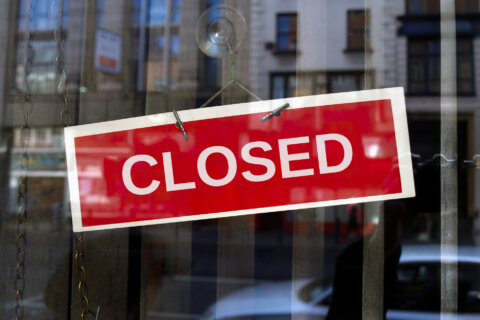When the sun sets tonight, families around the world will gather to celebrate the Festival of Lights. They’ll light a menorah, maybe open gifts, but for some the beginning of Hanukkah means the end to a year-long wait, for doughnuts.
You won’t find any holes in this fried treat. Hanukkah doughnuts, or “sufganiyot,” are filled and topped. Berry jam and powdered sugar are traditional finishes.
But at Adir Michaeli’s namesake bakery in New York City, he’s mixing things up: “So, other than the classic strawberry jam, we have the dulce de leche. We have the pistachio cream topped with some strawberry. We have the halva cream. We have the hazelnut and milk chocolate. Kids would love that.”
Adults and kids alike line up for the treats. This year Michaeli expects to sell over 20,000 of his sweet delights during the holiday.
Hanukkah commemorates the military victory of the Maccabees over the Syrian Greek Army. But the real miracle: the oil-burning menorah in the besieged temple continued to shine for eight days, even though, according to the story, there was only enough oil to last one.
We’ve long had the latke, or potato pancake, to remember the marvel. Sufganiyot came much later, according to culinary history expert Avery Robinson.
“The jelly doughnut came into the Hanukkah celebration as the sufganiyot about 100 years ago in the 1920s,” he told Altschul. “It’s pretty new; all things considered, it is a very new thing.”
Sufganiyot may be new, but its origins go way back. “In the earliest compilation of rabbinic texts, the Mishnah, which was redacted and compiled around 200 C.E, there is a discussion about different types of dough.”
Discussion, but no definition, until Israeli bakers years later decided to borrow a tradition they had seen popularized elsewhere. Robinson said, “When Jews were living in Central Europe in the 19th and early 20th century, and these Jews came to Israel (or pre-state Israel) as bakers, they came with this knowledge and tradition and understanding of these doughnuts around them.”
To make it work for the Jewish holiday, a few things had to change. “Many of those doughnuts may have been cooked in lard,” Robinson said. “But we will cook them in oil, because that’s what we’re supposed to do on Hanukkah. There’s one thing that we’re supposed to do on Hanukkah, that’s not light candles; it is oil.”
And that’s how it’s been done ever since.
The method for making these is precise. Each doughnut at Michaeli’s is weighed, hand-rolled, and meticulously topped. The process takes almost three hours.
With each bite, a burst of flavor, a celebration, and a reminder of those eight special nights.
Alstchul asked Michaeli, “Do you eat one a day?”
“More than one, unfortunately.”
“Balance, right? Doughnuts, balance with a little exercise?”
“There is no balance with doughnuts,” Michael replied. “Balance in January.”







